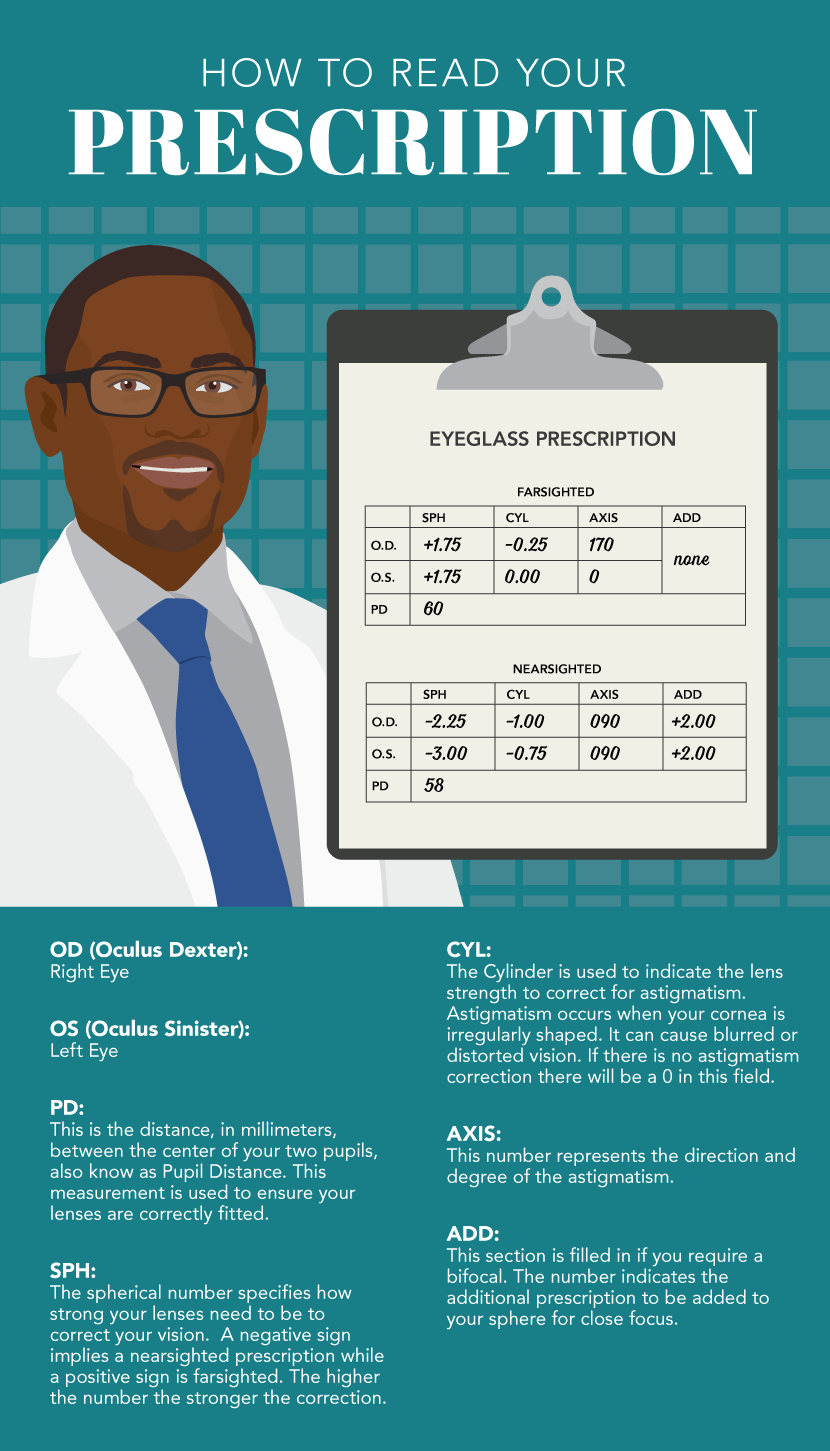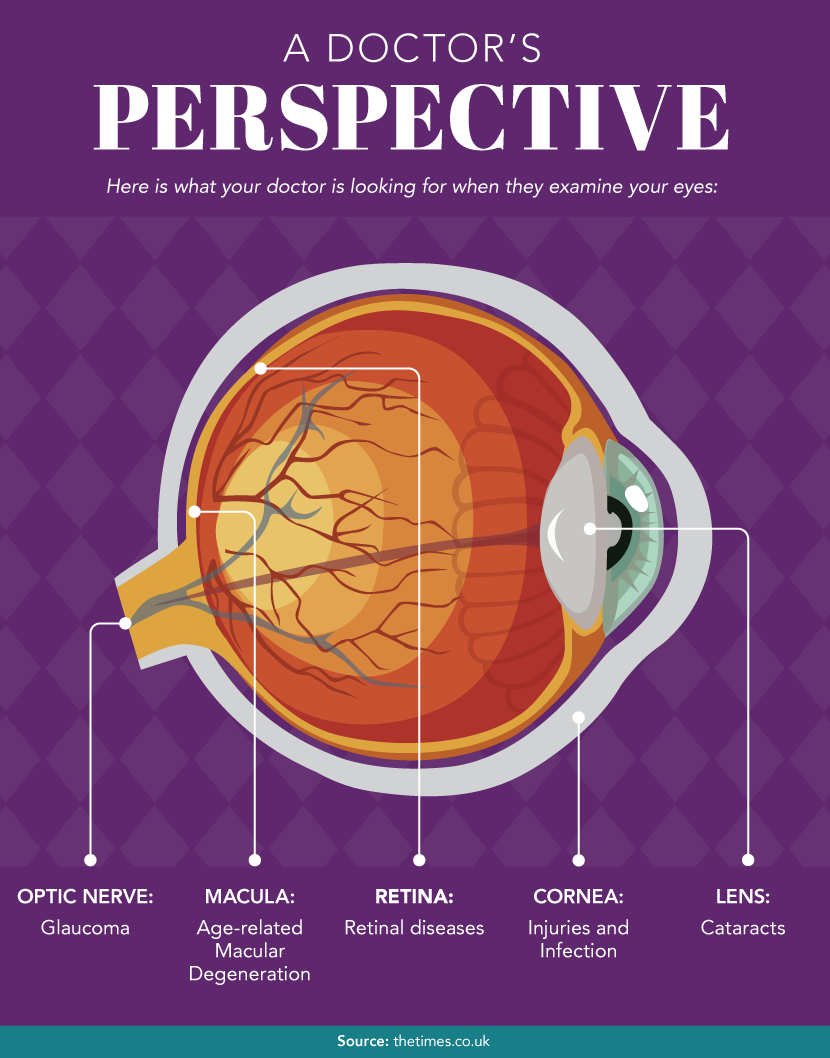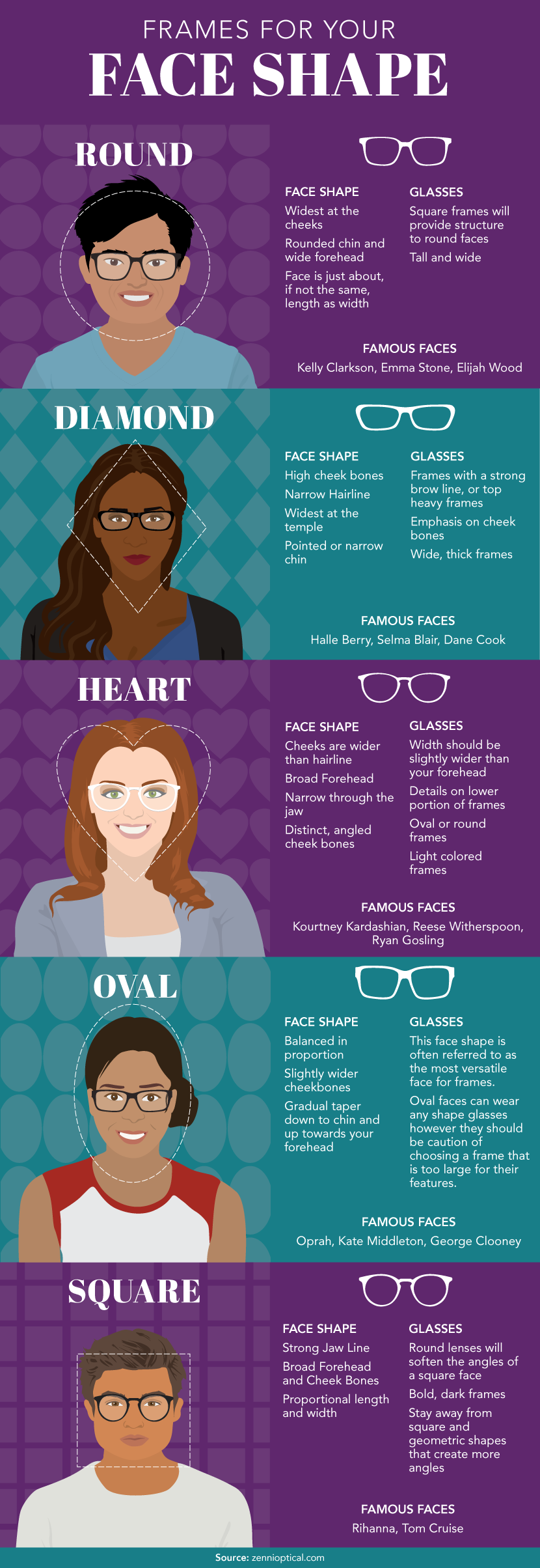Eye Spy:
Guide to Healthy Eyes
If eyes are the window to the soul, that makes optometrists the gatekeepers!
Eye health is an important part of our overall well-being, yet many of us overlook it.
While you may have perfect vision, your optometrist does much more than write prescriptions for glasses and contacts.
Optometrists can also detect early stages of diseases that, when left untreated, could lead to blindness.
The Importance of Getting an Eye Exam
Even if you don’t need glasses, getting a regular eye exam should be a part of your healthy lifestyle.
Most eye care experts suggest scheduling a comprehensive eye exam every one to two years,
depending on risk factors such as your age and whether or not you already have glasses or contacts.http://www.allaboutvision.com/eye-exam/preparing.htm
Adults should have an eye exam every year if they have any of these risk factors:
- Diabetes
- A family history of eye disease
- High blood pressure
- Had eye surgery
- Currently on medication that have eye-related side effects
Children should have their first examination by the time they are six months old, and every two years following.http://www.aoa.org/patients-and-public/caring-for-your-vision/comprehensive-eye-and-vision-examination/recommended-examination-frequency-for-pediatric-patients-and-adults?sso=y Children should have an eye exam every year if they have:
- Developmental delays
- Crossed eyes
- Premature birth
- Low birth weight
- Family history of eye disease

What to Expect at the Appointment
Your comprehensive eye exam can take up to an hour, depending on your medical history and the complexity of tests your doctor has to perform.
It is important to bring a list of any medications, vitamins, and herbal supplements you are currently taking, as well as your glasses and contacts, if you have them, to your appointment.
If you have any concerns or questions about your eye health, jot them down before your appointment so you can discuss them with your eye care professional.
Sometimes you will see the doctor right away, but it’s more likely that a technician will escort you to an exam room and review your general health and any concerns you have.
The tech may also do some tests and dilate your eyes before you sit down with the doctor.
Your doctor will then examine both your eyes, inside and out, and check to make sure you have good eye movements and the muscles are well balanced.http://lookafteryoureyes.org/seeing-clearly/the-eye-examination/what-happens-in-an-eye-examination/
The optometrist will then do a series of vision tests to assess your eyesight. This is where the big chart with random letters comes into play.
During this time, you will be asked to look through different lenses and indicate which one is in focus and which one is not.
If you aren’t sure and can’t tell the difference don’t be afraid to tell your optometrist – that’s valuable information too.
After the tests are complete, the optometrist will advise you on when to return for your next appointment and provide you with a prescription for glasses or contact lenses if you need them.
If further exams or medical treatment are required, you may also be given a referral for an ophthalmologist or other doctor.
What is Pupil Dilation?
Occasionally your doctor will need to enlarge your pupil to see the inside of your eye in better detail.
This is done by administering dilating eye drops into each of your eyes.
These drops don’t feel any different than regular eye drops and there is no need to be nervous about the procedure.
The drops take between 20 and 30 minutes to fully dilate your pupil. If you have light colored eyes, you’re in luck!
Your pupils will dilate faster than your dark-eyed peers.http://www.aao.org/eye-health/treatments/what-to-expect-eyes-are-dilated
Once your pupils are dilated, you will be sensitive to light and your vision may be blurry.
Pro tip: Bring a pair of dark sunglasses with you to your appointment to avoid having to wear the embarrassingly large disposable glasses the doctor provides.
Most people feel comfortable enough to drive after their dilation, but if you have never had this done before it’s a good idea to recruit a friend or family member to pick you up afterwards.
You can expect your eyes to return to normal after 4–6 hours.

What is Detected with a Dilated Eye Exam?
The most common retina diseases that are diagnosed through a dilated pupil are diabetic retinopathy and age-related macular degeneration (AMD).http://www.brightfocus.org/glaucoma/article/dilated-eye-exam-why-its-so-important
Glaucoma, a disease of the optic nerve, can be diagnosed with undilated pupils, however, for a more comprehensive and accurate exam optometrists prefer to have the pupil dilated.
Diabetic Retinopathy: This diagnosis is the result of complications associated with diabetes. The early stages of the disease offer few signs and symptoms and if it isn’t treated quickly it can lead to blindness.
Age-Related Macular Degeneration (AMD): AMD occurs when the center of the retina, known as the macula, begins to deteriorate.http://www.webmd.com/eye-health/macular-degeneration/age-related-macular-degeneration-overview
This disease progresses with age and consequently is the leading cause of blindness in people over the age of 60.
Glaucoma: The result of damage on the optic nerve causes patients with glaucoma to have severe vision loss, and if untreated results in complete blindness.
While there are a number of warning signs, because the progression begins peripherally people often do not notice the change in their vision.
For this reason, eye care professionals have dubbed it the “Silent Thief” of sight.
If diagnosed early enough, your optometrist can provide you with treatments to slow down and prevent further damage to your optic nerve, often with simple eye drops.
Common Eye Concerns
Floaters: The inside of the eye is full of a thick jelly. With time it changes and becomes more liquid, and clumps and particles begin to form and float about.
If these particles float in your line of vision, they cast a little shadow on the retina and you see it as a black floating spot.
They’re a part of the natural changes inside the eye, and people of all ages experience them.
With time they may appear less often or they may stick around, so make friends with your floaters!
But like a good friend, be on the lookout for any big changes in your floaters – a new shape or an increase in the number of floaters.
Dark curtains or flashes of light should be checked out by your optometrist right away.
Most likely they are normal changes, but it’s never worth ignoring them and losing your vision as a result.
Sties: If you have a small, painful, red lump on your eyelid if could be a stye. While they are rarely a serious medical condition, they can be unforgivingly irritating.
Sties usually go away on their own after about a week, but if the pain and swelling becomes too much your optometrist can provide you with treatment options.
Conservative treatments often include warm compresses and oral or topical antibiotics. In more extreme cases you may need to have the stye surgically removed.
Conjunctivitis: More commonly known as pinkeye, conjunctivitis is one of the most common treatable eye conditions in children and adults alike.http://www.cdc.gov/features/conjunctivitis/
It can be caused by viruses (such as a common cold), bacteria, and allergens. Pinkeye often presents as red, itchy uncomfortable eyes.
If you suspect you have an infection such as pinkeye, your optometrist is better equipped to diagnose and treat your specific eye problem than your family doctor.
Don’t hesitate to call the optometrist and ask for an urgent appointment for a possible eye infection.
The doctor can tell you if it’s contagious and if you will require medication.

Tips for Good Eye Health
Good eye health goes beyond seeing your optometrist every one or two years. There are changes you can make in your daily life to ensure you have perfect vision for years to come.
Diet
Leafy Greens: Add some extra spinach, kale, and collards to your meals.
These leafy greens are packed with antioxidants such as lutein and zeaxanthin and can help lower your risk of developing cataracts and macular degeneration.
Strawberries: These delicious berries are chock-full of vitamin C, which plays an important role in strengthening your eye’s cornea and retina.http://www.besthealthmag.ca/best-you/arthritis-and-pain/10-health-benefits-of-strawberries/3/
They also can help protect against cataracts and exposure to free radicals.
Eggs: Another antioxidant powerhouse, eggs are believed to help protect your eyes from UV radiation from the sun. They also help reduce your risk of developing cataracts.
Lifestyle
Quit Smoking: Smoking is strongly linked to age-related macular degeneration.
Not only is kicking the habit to the curb great for disease prevention but it can also brighten and whiten your sclera – the white part of the eye.
Wear Sunglasses: Time to go shopping! Eye care professionals can’t emphasise enough the importance of wearing sunglasses.
They will protect your eyes from free radical UV damage, cataracts, and eyelid cancer.
Can’t see without your glasses? Talk to your optician about getting prescription sunglasses or transition lenses.
Reduce Screen Time: Avoiding computer screens is nearly impossible these days.
To help prevent eye strain and fatigue, follow the 20/20/20 rule. For every 20 minutes you stare at a screen,
break for 20 seconds and focus on something 20 feet away to give your eyes a much-needed break.
Your eyesight is precious. By making a few lifestyle changes and visiting your eye care professional you will keep your peepers healthy and happy for years to come.
Embed the article on your site

